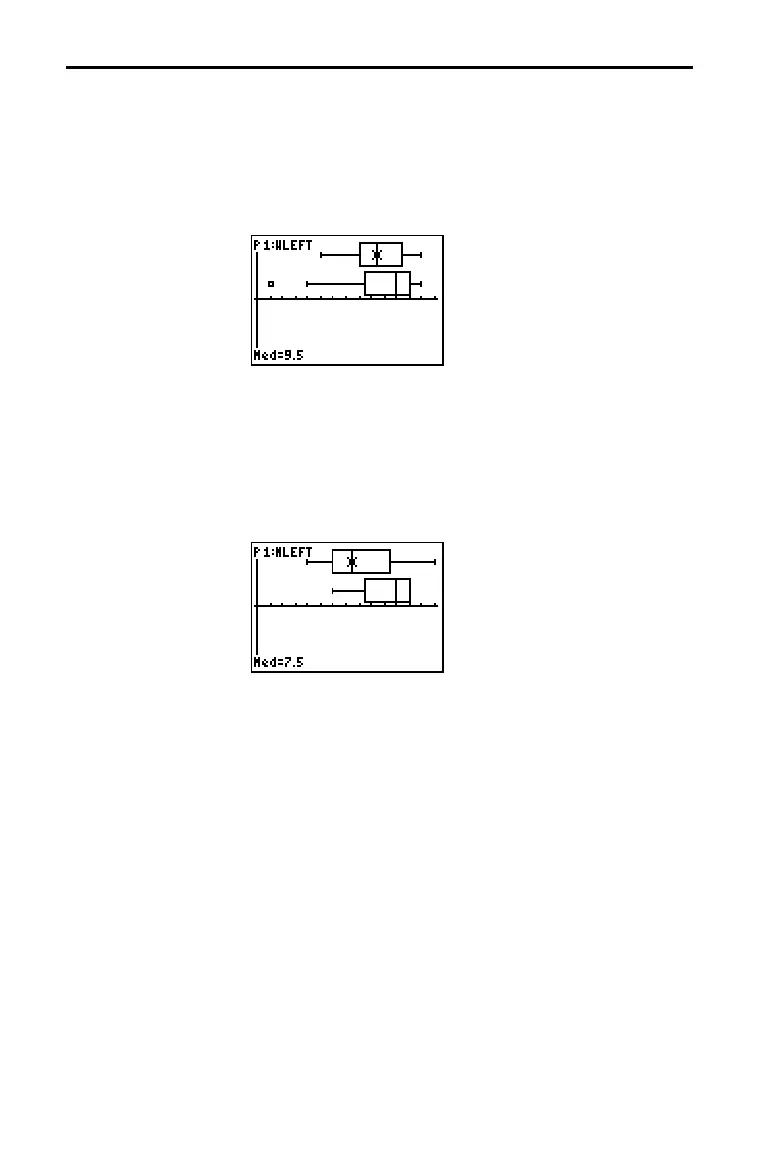Applications 17–3
82501F~1.DOC TI-83 international English Bob Fedorisko Revised: 10/26/05 1:49 PM Printed: 10/27/05 3:04
PM Page 3 of 20
6. Press o. Turn off all functions.
7. Press p. Set
Xscl=1 and Yscl=0. Press q 9 to
select
9:ZoomStat. This adjusts the viewing window and
displays the box plots for the women’s results.
8. Press r.
% Women’s left-hand data
% Women’s right-hand data
Use | and ~ to examine minX, Q1, Med, Q3, and maxX for
each plot. Notice the outlier to the women’s right-hand data.
What is the median for the left hand? For the right hand?
With which hand were the women more accurate guessers,
according to the box plots?
9. Examine the men’s results. Redefine plot 1 to use
MLEFT,
redefine plot 2 to use
MRGHT. Press r.
% Men’s left-hand data
% Men’s right-hand data
Press | and ~ to examine minX, Q1, Med, Q3, and maxX
for each plot. What difference do you see between the plots?
10.Compare the left-hand results. Redefine plot 1 to use
WLEFT, redefine plot 2 to use MLEFT, and then press r
to examine
minX, Q1, Med, Q3, and maxX for each plot. Who
were the better left-hand guessers, men or women?
11.Compare the right-hand results. Define plot 1 to use
WRGHT,
define plot 2 to use
MRGHT, and then press r to examine
minX, Q1, Med, Q3, and maxX for each plot. Who were the
better right-hand guessers?
In the original experiment boys did not guess as well with
right hands, while girls guessed equally well with either
hand. This is not what our box plots show for adults. Do you
think that this is because adults have learned to adapt or
because our sample was not large enough?
Procedure
(continued)

